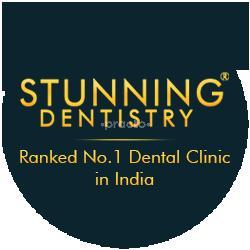- Male Doctor
- Female Doctor
- 30+ Patient Stories
- 130+ Patient Stories
- 280+ Patient Stories
- 5+ Years of experience
- 10+ Years of experience
- 15+ Years of experience
- 20+ Years of experience
- Number of patient stories - High to low
- Experience - High to Low
- Consultation Fee - High to Low
- Consultation Fee - Low to High
379 Dentists available in Delhi

Book appointments with minimum wait-time & verified doctor details

Trail Dental Clinic

Dr. Dheeraj Setia

Dr. Karan Marya

Dr. Sourabh Nagpal

Dr. Amit Baranwal

Stunning Dentistry

Dr. Geetanjali Marya

Dr. Kapil Garg

Dr. Radhika Sahni


Dr. Sumit Solanki

Dr. Rachna Solanki
1. Who is a dentist?
A dentist is a doctor who practices dentistry. Dentistry involves the mouth, teeth, gums, and related areas. A dentist takes care of the overall oral healthcare. Common procedures performed at the dentist are tooth filling, tooth extraction, cleaning and polishing of teeth, and minor tooth surgeries like root canal treatment. Within dentistry, there are many specializations that require further training.
2. What education qualifications are mandatory for a Dentist?
A doctoral degree in the field of dental medicine or dental surgery is required to become a dentist. The pre-requisite for doing a dental course is a 4-year bachelor’s degree in a science related field. Qualifying in the dental admission exam and enrolling in a dental school are the next steps.
3. Should I consult a dentist for bad breath?
Bad breath is often due to lack of oral hygiene. In some cases, it may be an indication of some underlying health issue. Consulting a dentist for bad breath is the most logical step. A dentist will perform thorough examination of your teeth and gums to determine the cause of bad breath. Halitosis is the medical term for bad breath.
4. How many sittings does a dentist take for Root canal treatment?
Root canal treatment is a dental procedure followed for advanced decay of tooth that cannot be repaired by filling. In this treatment the tooth pulp is removed, the space is cleaned and filled, and finally a crown is placed on the tooth. The number of sittings for a root canal treatment varies depending on the extent of tooth decay.
5. Will a dentist perform surgery for wisdom tooth removal?
People who develop wisdom tooth may require extraction at a later time. A dentist is the right person to perform extraction of wisdom tooth. Once you book an appointment for tooth extraction, the dentist will appraise you of the entire procedure and after care. Sedation, numbing, tissue removal, bone removal, and tooth extraction are the steps of wisdom tooth removal.

Dr. Meeka Gulati
| Name | Recommended By | Review Count | Years of Experience | Fee |
|---|---|---|---|---|
| Dr. Dheeraj Setia | 94% | 317 | 28 | 500 |
| Dr. Karan Marya | 96% | 123 | 42 | 800 |
| Dr. Sourabh Nagpal | 98% | 1684 | 20 | 500 |
| Dr. Amit Baranwal | 97% | 159 | 26 | 500 |
| Dr. Geetanjali Marya | 96% | 111 | 38 | 800 |
| Dr. Kapil Garg | 98% | 423 | 20 | 300 |
| Dr. Radhika Sahni | 98% | 349 | 29 | 1000 |
| Dr. Sumit Solanki | 100% | 112 | 16 | 500 |
| Dr. Rachna Solanki | 100% | 1146 | 19 | 300 |
| Dr. Meeka Gulati | 95% | 162 | 18 | 500 |
Best Dentists In Delhi
Related procedures in Delhi
Dentist in top localities
Dentist in Khanpur
Dentist in Delhi Cantonment
Dentist in Sunder Nagar
Dentist in Patel Nagar
Dentist in Jhandewalan
Dentist in Model Town
Dentist in Bhajanpura
Dentist in Okhla
Dentist in Connaught Place
Dentist in Dwarka
Related services in Delhi
Doctors For Hair Removal in Delhi
Doctors For Facials in Delhi
Doctors For Botox in Delhi
Doctors For Prosthetics in Delhi
Doctor For Prosthesis in Delhi
Doctor For Sprain in Delhi
Doctors For Palliative Care in Delhi
Doctors For Herniated Disc in Delhi
Doctors For Rhinoplasty in Delhi
Doctors For Arthroscopy in Delhi
Related treatments in Delhi
Treatment For Shoulder Pain in Delhi
Treatment For Gingivitis in Delhi
Treatment For Slip Disc in Delhi
Treatment For Bleeding Gums in Delhi
Treatment For Leg Pain in Delhi
Treatment For Cavities in Delhi
Treatment For Knee Pain in Delhi
Treatment For Calculus in Delhi
Treatment For Wisdom Teeth in Delhi
Treatment For Sjogren S Syndrome in Delhi
Finding the Right Dentist in Delhi
Delhi residents often begin their search with dentist near me, dentist in Delhi, or best dentist near me. The city has a large pool of verified and trusted dentists providing personalised and advanced dental care.
Practo helps you find Dentists in South Delhi, Rohini, Dwarka, Pitampura, Lajpat Nagar, Malviya Nagar, Mayur Vihar, and many other areas with clear profile details.
What Dentists in Delhi Commonly Treat?
Most dental clinics in Delhi offer:
- General dental check ups
- Cleaning and polishing
- Cavity fillings
- Crowns and bridges
- Root canal treatment
- Gum care and periodontal therapy
- Tooth extraction
- Cosmetic dental procedures
- Braces and aligners
- Pediatric dentistry
How to Choose the Best Dentist Near You in Delhi?
To find the best dentist in Delhi or the most suitable dental clinic near me, consider:
- Dentist experience
- Clinic hygiene standards
- Patient stories and ratings
- Proximity and accessibility
- Appointment convenience
Practo allows you to compare all these aspects before choosing.
When You Should Visit a Dentist?
Book a dentist in Delhi if you experience:
- Persistent toothache
- Bleeding or inflamed gums
- Difficulty chewing
- Sensitivity to cold or heat
- Mouth odour that persists
- Damaged or loose teeth
Why Dental Care in Delhi Matters?
With many established dental clinics in Delhi, residents can access dependable and timely oral care. Early treatment helps maintain healthier teeth and reduces the need for major procedures in the future.
